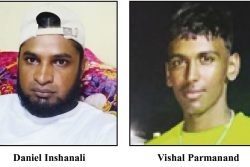Fifty years ago, the first ever tied Test was played between West Indies and Australia at Brisbane on December 9-14. Of course, neither side won that match, dubbed “the greatest Test of all” by Jack Fingleton, one of Australia’s finest cricket writers; and Australia triumphed, 2-1, in a hard-fought, nail-biting series that could have gone either way. But cricket, to be precise, Test cricket, was arguably the overall winner.
It is the stuff of legend, moreover, that the great Frank Worrell, on his first tour as the first black captain of West Indies for a whole series, and his team of cavaliers were feted as victors and heroes as 250,000 people came out onto the streets of Melbourne to give them a tickertape parade. Such an accolade was, at the time, unprecedented in cricket and in sport; significantly, it has not been accorded again to any visiting team, in any sport, in any country. In addition, the Australian cricket board inaugurated the Frank Worrell Trophy in honour of the visiting captain and the spirit in which he and his team had played throughout the series. Together, West Indies and Australia pulled Test cricket from the doldrums.
But back to the tied Test itself. There are still many Guyanese and West Indians who recall listening to the far away game in the middle of the night through the early morning, with the commentary crackling through the ether, the tension of the unfolding drama seemingly heightened by the static. For those younger ones among us, perhaps rather more accustomed to visual aids to fire their imagination and who regard live cricket coverage on television as commonplace, here is what contemporary sportswriter, Rob Steen, writing for Cricinfo, has to say about the highlights put together by Australia’s ABC television in the late 1990s: “Sure, the view was largely from mid-off, the camerawork dodgy as well as prehistorically limited, but every frame was precious: the joyous majesty of Garry Sobers’ cover drive as he flowed to his classical first-day hundred; Alan Davidson’s consummate allroundedness [sic]; Norm O’Neill’s power; Wes Hall and Rohan Kanhai in full exotic flight; the bedlam and mayhem that followed Joe Solomon’s unerring side-on throw as Ian Meckiff lunged for the winning run.”
For those who heard it on their transistor radios, for those fortunate enough to see it in person and for those who have since seen footage, the magic lives on. More the pity that the West Indies Cricket Board has not seen fit to ensure that the ABC video is widely available to be shown in schools and to be re-broadcast on a regular basis on television channels across the region. There have been few prouder moments in West Indian history, cricketing or otherwise.
Deryck Murray, the former West Indies vice-captain and wicketkeeper has said that Frank Worrell’s appointment as captain was a “great turning point” for West Indies cricket, as was the 1960-61 tour Down Under. For this series, apart from putting the seal of greatness on Frank Worrell as cricketer, captain and man, also confirmed the star quality of Conrad Hunte, Rohan Kanhai, Gary Sobers, Gerry Alexander, Wes Hall and Lance Gibbs, and heralded what was to be the first period of West Indian cricket dominance. From a narrower perspective, it was a source of immense national satisfaction and inspiration too that three Guyanese, Messrs Kanhai, Gibbs and Solomon, played such pivotal roles in the series.
Fifty years later, the story is a very different one. It is West Indies cricket that is in the doldrums. True, following the rain-ruined, ill-timed Test series against Sri Lanka, West Indies have nosed ahead of New Zealand to claim seventh place in the international rankings, but there have been too many false dawns before for anyone to argue with conviction that this is a definitive turning point.
We are pleased to admit, however, that we were wrong in our editorial a month ago (‘Weakness of character,’ November 12), to predict that West Indies were “on for a hiding to nothing.” And perhaps there was enough in the limited playing time available for Chris Gayle, Adrian Barath, Darren Bravo, Shivnarine Chanderpaul, Brendan Nash and Kemar Roach to dispel Vaneisa Baksh’s thesis that “West Indies cricket today suffers from weakness of character.” But notwithstanding the positives coming out of the truncated series and skipper Darren Sammy’s happiness with the team’s “fighting spirit,” there was still enough evidence of structural frailties, selectorial eccentricity, technical deficiencies and individual shortcomings for few people to be overly optimistic regarding the future.
Ironically enough, 50 years after the tied Test, it is Australia who are in complete disarray, following the thrashing inflicted upon them last week by England at Adelaide, which confirmed that their recent decline is inexorable. Australia are now in a position similar to West Indies whom they toppled from the peak in 1995. But lest we be tempted to overindulge in the schadenfreude of the moment, let us bear in mind that West Indies still have a long way to go before they can dine at the top table of world cricket, much less dream of being number one again.








